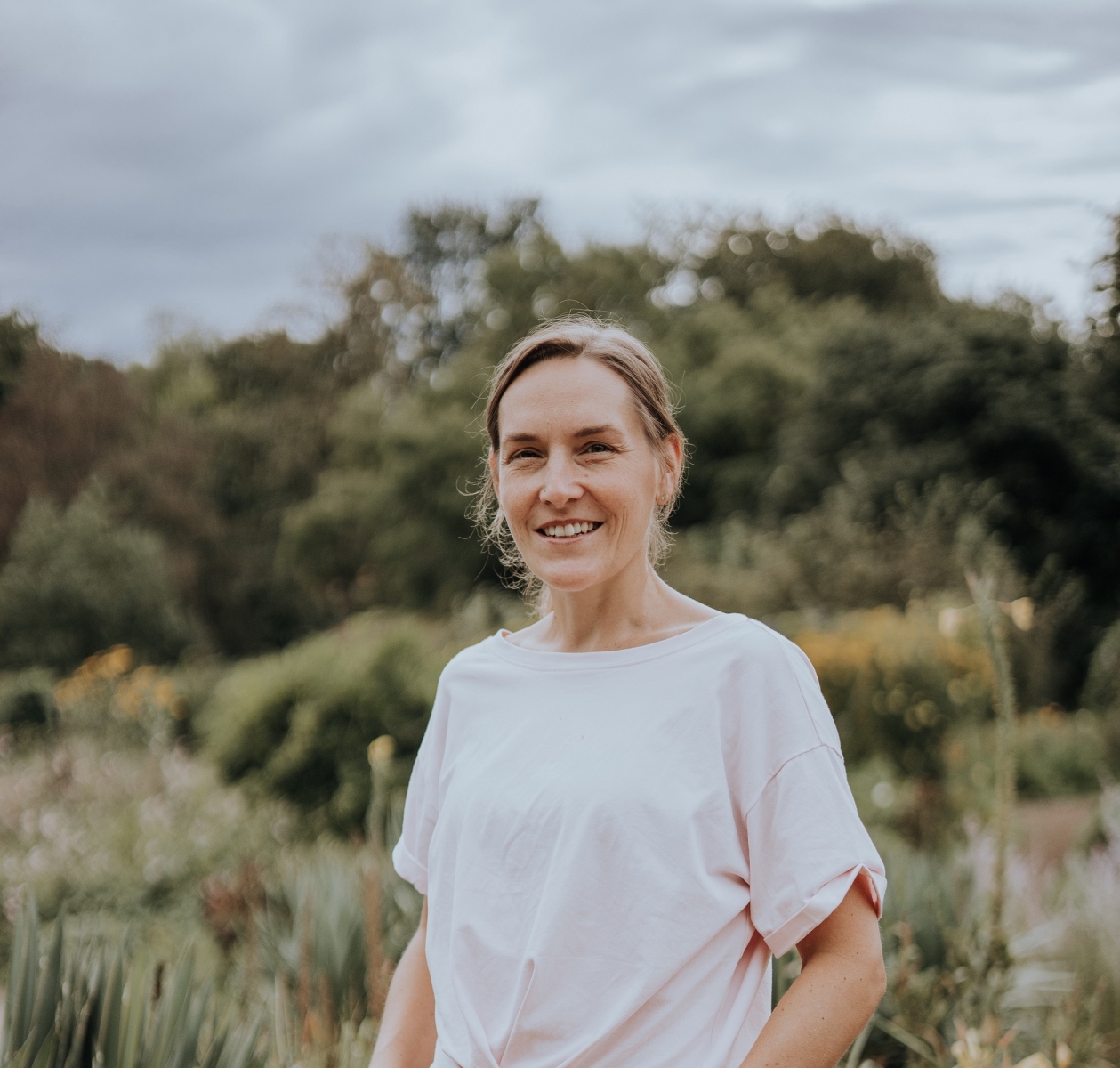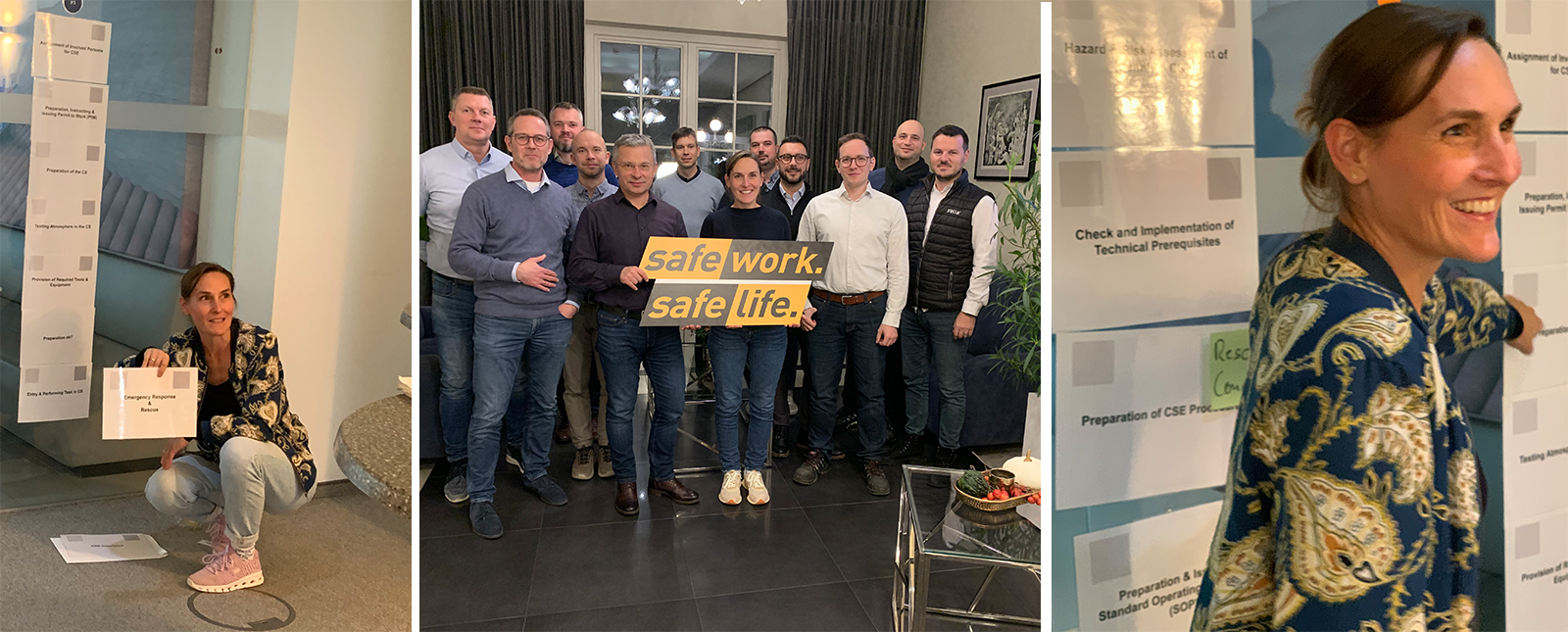What does your role as a Corporate EHS Manager involve?
My role is quite diverse. We focus a lot on strengthening a solid safety culture at Xella by empowering leaders in several ways. We offer trainings that go far beyond classic Behavior Based Safety approaches, and we provide guidance by creating general structures, and implementing technical standards across all our sites. Some well-known initiatives are for example the Total Safety Leadership Program (TSL), Xellas 10 Life Saving Rules or our Let’s Talk Safety Events. We ensure that the same standards and ideas are introduced everywhere. It's important that, in terms of safety, we all speak the same language.
So, safety for you is not only to introduce standards, right?
Right, for us it’s not just about developing and sharing standards; that’s not how we do things at Xella. We take it a step further and support our leaders to find their personal "why" behind our standards. Trainings, like our Total Safety Leadership (TSL) program support our leaders in doing so. At Xella, safety is one of our core values, and we’re constantly shaping the mindset to have it ingrained in our culture.
Xella is an international company with plants in 14 European countries. How do you maintain contact with the local EHS managers and the plants?
Constant communication is key for us. We need to get a feel for how each plant operates. For example, local EHS managers sometimes ask for support with implementing the Life Saving Rules, so we visit the plants, observe the situation on the ground, and provide targeted training and support. We maintain a continuous dialogue with the local EHS managers, offering help and addressing both technical and personal issues together.
What motivates you in your work?
It’s incredibly fulfilling when you see someone taking initiative and truly understanding the "why" behind our safety standards at Xella. It shows that they’ve grasped the importance of safety and have it in their mindset. I also love visiting the plants. Being on-site and contributing to positive changes is what excites me the most. It's about helping people presenting options and making change possible together – making sure that everyone returns home safely one day.
How do you bring people along on the path to change?
When we implement new standards, we always try to take a holistic view. It’s about showing options and working together to understand each other’s motivations. Staying engaged, following up, and ensuring that no one feels criticized - rather, that they understand our concern is for their well-being - is crucial. And of course, understanding the person behind the job makes it easier. But I don’t think this is a skill that is just beneficial in the EHS department. Being human is always a good idea.
How did you become an EHS Manager?
My path wasn’t standard.I started in an administrative role, working in HR with a focus on health management. There I had my first safety touchpoint, working with colleagues who came back into their jobs after they’ve had an accident. I was approached by senior leaders within the company, who asked if I could envision switching roles from Health Management to Prevention. That’s how I started working with the German plants as team lead EHS for Germany. My role involved working directly on-site, solving problems with plant teams. Although I had no prior experience with plant operations, I gained valuable insights through on-the-job learning and the support of experienced mentors. That period was intense but incredibly valuable, giving me insight into plant dynamics and the importance of understanding each other’s shoes. In 2020, I took the opportunity to join the Corporate Team to focus much more on creating general structures and a safety leadership framework on group level, a very meaningful job that I am grateful for every day.
Which role did leaders play for your development at Xella?
Without their affirmation, I wouldn’t have taken the huge step of switching fields and stepping into a leadership role. While I was battling inner conflicts stemming from thought patterns that I believe women still encounter far too often when facing leadership opportunities—patterns we are often socialized into—they were already confident I would learn quickly and find my path. They believed in me, saw my strengths and what drives me, and found the perfect position. Back then, just as now, they left no doubt that my voice should be heard just as much as my predominantly male colleagues.
For me, the key to bringing more women into our demanding industry is having leaders who are truly reflective on these issues. It is about supporting women overcome the structural hurdles still in place, and even more about daring to take a chance on them, even when they themselves may not yet fully commit to their potential. Leaders who embrace this challenge cannot only create real opportunities for women in roles they might never have envisioned but they will personally benefit from a more diverse and successful team.
What are some aspects of your job that you find particularly fulfilling?
Visiting plants is what I look forward to the most. Being on-site, making a tangible contribution, and seeing how our work keeps our colleagues safe is incredibly rewarding. Another fulfilling aspect is working with our team. We are very supportive of each other, and when challenges arise, we always come together to back each other up and find solutions.
How do you like to relax or unwind in your free time?
I unwind by traveling, spending time with family and friends, and indulging in my passion for Portugal and surfing—ideally, both at the same time!
However, if there is no vacation I am working on my second – unfortunately unsuccessful career – as a farmer in my garden.


